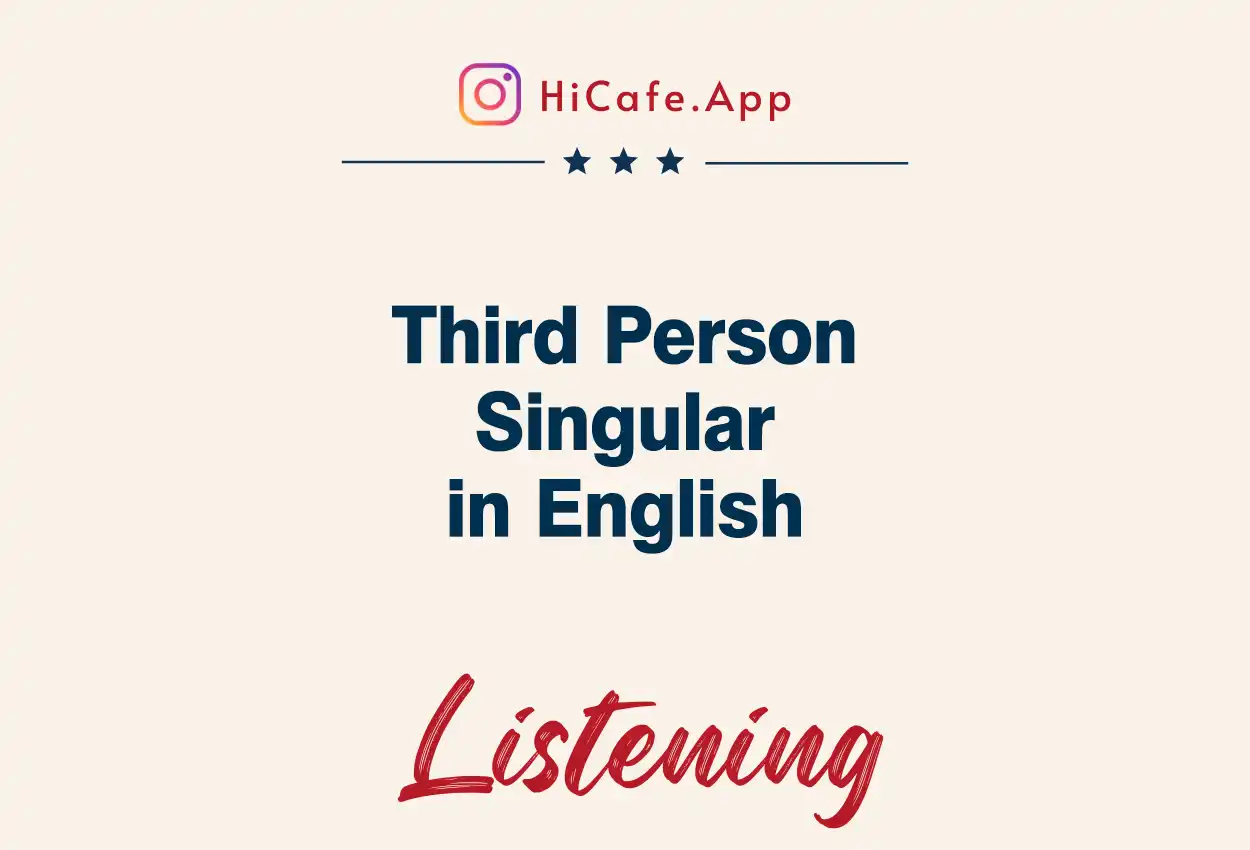تقویت لیسنینگ زبان سطح مبتدی سری 1 درس 12- مکالمه انگلیسی بین دو نفر درباره شخص سوم
در این درس به مکالمه انگلیسی بین دو نفر که در مورد شخص سوم صحبت می کنند گوش می دهید.
درس قبلی لیسنینگ زبان
TBD
فایل صوتی تقویت لیسنینگ زبان انگلیسی با متن
فایل صوتی
متن فایل صوتی
Conversation 1
Man: What does Bob do?
Woman: He works at a hospital.
Man: What does he do there?
Woman: He’s a doctor. He specializes in sports medicine.
Man: That sounds like a great job.
Woman: Yeah, he loves it.
Conversation 2
Man: Where does Mary live?
Woman: She lives in the countryside.
Man: That sounds nice.
Woman: Yeah, she loves it. She has a farm and she raises horses.
Man: Wow, that’s so cool.
Woman: Yeah, she also grows her own food. She has it all!
Conversation 3
Man: How does Sue stay so fit?
Woman: She works out all the time.
Man: It sure looks like it.
Woman: She also watches what she eats.
Man: Does she follow a special diet?
Woman: Yes, she doesn’t eat sweets and she doesn’t drink alcohol.
Conversation 4
Man: What does this machine do?
Woman: It shreds paper.
Man: How does it work?
Woman: Just put paper here and it shreds it. It’s easy to use.
Man: How does it stop?
Woman: It stops on its own after it finishes shredding the paper.
کوییز برای تمرین لیسنینگ زبان
Answer these questions about the conversation.
1) Who works at a hospital?
a) Bob
b) Carl
2) Who has a farm?
a) Mary
b) Sue
3) Who stays in good shape?
a) Mary
b) Sue
4) What does the machine do?
a) Copy paper
b) Shred paper
Answers:
1=a
2=a
3=b
4=b
نکات گرامر برای تقویت لیسنینگ زبان انگلیسی
زمان حال ساده— سوم شخص مفرد
نکته 1: ” سوم شخص مفرد” به یک شخص یا شیئی اشاره دارد که شما دربارهی آن صحبت میکنید. از آنجا که “مفرد” است، فقط به یک شخص یا یک شیء اشاره دارد.
- Bob is my boss. He helps me a lot.
- Suzy has a nice car, but she never drives it to work.
- My phone does not take pictures. It does not have a camera.
- This pizza tastes great. It has a lot of calories, though.
نکته 2: در زمان حال، وقتی فاعل جمله، سوم شخص مفرد باشد، معمولاً به انتهای فعل یک /-s/ اضافه میکنیم.
- Larry loves videos games. He plays them every night.
- Sue walks to work. She listens to podcasts as she walks.
- My phone needs a new charger. It costs 40 dollars.
نکته 3: در جمله منفی، do not به does not تغییر میکند. در حالت گفتار، معمولا از مخفف آن، doesn’t استفاده میکنیم.
- She does not work nights. => She doesn’t work nights.
- He does not travel much. => He doesn’t travel much.
- It does not snow much in my town. => It doesn’t snow much in my town.
نکته 4: در سوالات WH (سوالاتی که با کلمات پرسشی مانند who، what، where و غیره شروع میشوند)، اگر سوال در مورد مفعول جمله باشد، فعل کمکی “do” به “does” تغییر میکند.
- When does the train leave? => It leaves at six.
- What does your mom want for her birthday? => She wants a cat.
- How does your wife get to work? => She takes the bus.
- Why does he always look angry? => He has a lot of stress.
نکته 5: اگر سوال در مورد فاعل جمله باشد، به فعل /-s/ اضافه میکنیم و از فعل کمکی “does” استفاده نمیکنیم. کلمهی پرسشی در این حالت یا “what” (چه چیزی) خواهد بود یا “who” چه کسی.
- Who lives here? => My friend lives here.
- What costs a lot of money? => College costs a lot of money.
- Who talks to you every day? => My dad talks to me every day.
- What takes up a lot of your time? => Driving to work does.
نکته 6: در سوالات “بله/خیر”، فعل کمکی “do” هم در خود سوال و هم در پاسخ کوتاه به “does” تغییر میکند.
- Does he work here? => Yes, he does. / No, he doesn’t. (does not)
- Does she have a nice house? => Yes, she does. / No, she does not.
- Does it rain much in your town? => Yes, it does. / No, it does not.
عبارات انگلیسی برای تقویت لیسنینگ زبان
کوییز برای تمرین عبارات انگلیسی
درس بعدی لیسنینگ زبان
TBD
درس های لیسنینگ مرتبط
TBD
تمام دروس برای تقویت لیسنینگ زبان
برای دیدن تمام 300 درس تقویت لیسنینگ زبان انگلیسی های کافه، از صفحه یادگیری و تقویت مهارت شنیداری دیدن کنید.



